Articles by Helena Guzik
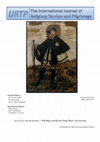
The International Journal of Religious Tourism and Pilgrimage, 2021
Despite the wealth of material and textual evidence attesting to the practice of Christian pilgri... more Despite the wealth of material and textual evidence attesting to the practice of Christian pilgrimage throughout history, comprehending an individual's understanding of pilgrimage in relation to his or her own identity has always proved challenging. Pilgrimage studies scholars have tended to look to travel accounts, chronicles, and collected pilgrim souvenirs to discern how pilgrims were affected by and responded to their experiences. One form of source material that has gone largely underexamined in this regard is the genre of portraiture. This article explores how and why the concept of pilgrimage could be incorporated into the self-fashioned images of patrons in medieval and early modern Europe. Building on foundational but geographically and temporally specific studies of Jerusalem confraternity portraits, it aims to consider both overt and subtle iconographic references to pilgrimage to broaden our understanding of what constitutes a pilgrim portrait. By engaging with the flexibility of pilgrimage iconography and the multifaceted motivations behind invoking it in a permanent likeness, this paper argues for the dual faculties of memory and imagination present in portraits that manifest allusions to an individual's pilgrim identity. Furthermore, it paves the way for future studies of pilgrimage iconography generally, and specifically of pilgrim portraits in a more abstract, allegorical sense.
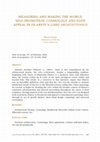
Imago Temporis. Medium Aevum, 2021
Antonio Averlino (Filarete) (c. 1400–c. 1469) is best remembered for his architectural treatise, ... more Antonio Averlino (Filarete) (c. 1400–c. 1469) is best remembered for his architectural treatise, the Libro architettonico. Despite a longstanding tradition, beginning with Vasari, of dismissing Filarete as a mediocre artist with ridiculous ideas, his treatise ended up in some of the most prestigious courts within and beyond Italy. This article, in a corrective to that narrative, argues that Filarete was an incredibly ambitious artist and that the Libro was his attempt to channel intellectual trends of interest to the fifteenth-century ruling elite whose patronage he courted. It begins by situating the Libro within the broader context of Filarete’s consistent self-promotion and shrewd networking throughout his career. It then examines, through analysis of the text and illustrations, how the Libro was designed both to promote Filarete to his patrons and appeal to contemporary patronage tastes through its use of specific themes: ideal urban design, cosmology, and universal sovereignty.
The Ashmolean Magazine, 2020
In 2018 Bob Forrest donated his extensive collection of religious medals to the Ashmolean Museum'... more In 2018 Bob Forrest donated his extensive collection of religious medals to the Ashmolean Museum's Heberden Coin Room. The collection, consisting of roughly 3500 objects, is particularly strong in its holdings of medals from nineteenth- and twentieth-century Europe, but ranges chronologically from the fourteenth century to the present day and includes material from Africa, the Americas and Asia. While Christian medals comprise the majority of the collection, there are also examples of Jewish, Islamic and Buddhist objects as well. Ranging widely in both form and function, these medals are a fascinating testament to the importance of materiality in everyday devotional practice.
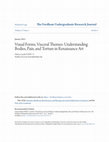
Fordham Undergraduate Research Journal, 2012
Despite its relevance to modern discussions, the scholarly treatment of torture in art is relativ... more Despite its relevance to modern discussions, the scholarly treatment of torture in art is relatively infrequent. This project explores, through the visual evidence of artistic works, the implications of Renaissance philosophies surrounding the human body in the context of pain and particularly the physical suffering endured during torture. By examining varying techniques of representing the human form across an array of artistic media, this article strives to illuminate the struggle between the rise of scientific naturalism and prevailing currents of spiritual dualism when considering the question of the body in torment. In highlighting the artist as narrator of Renaissance society’s moral, spiritual, and political tropes, this research sheds additional light on Renaissance humanity’s understanding of itself in the intensified instances of physical suffering at the hands of the state. In analyzing images of torture in light of Renaissance understandings of the body, this article seeks to contribute a more contextual perspective on these types of representations to the ongoing academic dialogue.
Book Chapters by Helena Guzik
La peregrinación de la nobleza en la Edad Media, 2022
Papers by Helena Guzik

Despite the wealth of material and textual evidence attesting to the practice of Christian pilgri... more Despite the wealth of material and textual evidence attesting to the practice of Christian pilgrimage throughout history, comprehending an individual's understanding of pilgrimage in relation to his or her own identity has always proved challenging. Pilgrimage studies scholars have tended to look to travel accounts, chronicles, and collected pilgrim souvenirs to discern how pilgrims were affected by and responded to their experiences. One form of source material that has gone largely under-examined in this regard is the genre of portraiture. This paper explores how and why the concept of pilgrimage could be incorporated into the self-fashioned images of patrons in medieval and early modern Europe. Building on foundational but geographically and temporally specific studies of Jerusalem confraternity portraits, it aims to consider both overt and subtle iconographic references to pilgrimage to broaden our understanding of what constitutes a pilgrim portrait. By engaging with the flexibility of pilgrimage iconography and the multifaceted motivations behind invoking it in a permanent likeness, this paper argues for the dual faculties of memory and imagination present in portraits that manifest allusions to an individual's pilgrim identity. Furthermore, it paves the way for future studies of pilgrimage iconography generally, and specifically of pilgrim portraits in a more abstract, allegorical sense.

While studying pilgrimages in medieval and early modern Europe naturally invites speculation abou... more While studying pilgrimages in medieval and early modern Europe naturally invites speculation about pilgrims' devotional intentions and internal motivations, it is key to remember that pilgrimages have always been physical, sensual, aesthetic experiences as well. For participants, undertaking a pilgrimage necessarily entailed encountering built environments and objects that range from the mundane to the luxurious. For onlookers, pilgrimages presented public performances of devotion often accompanied by recognisable attire and objects. Furthermore, because pilgrimages were such a common occurrence during this time period, the inclusion of its symbols in works of art allowed not only for a direct allusion to the practice itself, but for evocations of various other potential connotations associated with the concept of pilgrimage.
This lecture illuminates the visual and material culture of pilgrimage, exploring how images and objects both facilitated the pilgrimage experience itself and commemorated it after its completion. The talk focuses specifically on how pilgrims were represented in the art of medieval and early modern Europe. Referencing examples across a variety of artistic mediums, it presents the standard iconography associated with pilgrimage and explain the multivalent purposes that this under-examined imagery can serve within the broader context of artistic interpretation.

Isabella d'Este (1474–1539), arguably the most famous female patron of the Renaissance, has been ... more Isabella d'Este (1474–1539), arguably the most famous female patron of the Renaissance, has been the subject of extensive scholarly attention. Frequently, though, interest in her prolific art collecting and political maneuverings eclipses examination of her religious practices. Deliberate consideration of Isabella's devotional life reveals her consistent interest and participation in the practice of pilgrimage. While her biographies often relegate Isabella's pilgrimages to asides and footnotes, we are fortunate to have a robust corpus of correspondence that attests to their frequency and significance. This paper traces Isabella's several pilgrimages and how they coincided with major milestones in the marchesa's life—the births of children, the betrothal of her firstborn son. It considers these events in the context of her broader devotional habits and illustrates the various ways that religion influenced her collecting and her identity as a ruler. Finally, it links these events with her body of artistic patronage by offering a novel iconographic reading of the intarsia panels installed in her grotta. A solitary figure of a pilgrim—hitherto unexamined—is central in the idealized cityscape depicted in the wood panelling. His inclusion makes much more sense when assessed in light of Isabella's personal history of pilgrimage throughout her life. By detailing the historical context, we can begin to understand why Isabella would incorporate pilgrimage imagery in a meticulously cultivated iconographic programme designed to promote herself and underscore her virtue. Though Isabella was extraordinary in many ways, attention to her life through this lens gives us a glimpse of the importance of pilgrimage to elite Renaissance women and offers a more nuanced picture of early modern Italian courts.

Isabella d'Este (1474–1539), arguably the most famous female patron of the Renaissance, has been ... more Isabella d'Este (1474–1539), arguably the most famous female patron of the Renaissance, has been the subject of extensive scholarly attention. Frequently, though, interest in her prolific art collecting and political maneuverings eclipses examination of her religious practices. Deliberate consideration of Isabella's devotional life reveals her consistent interest and participation in the practice of pilgrimage. While her biographies often relegate Isabella's pilgrimages to asides and footnotes, we are fortunate to have a robust corpus of correspondence that attests to their frequency and significance.
This paper traces Isabella's several pilgrimages, positing motivations for their undertaking. It considers these events in the context of her broader devotional habits and illustrates the various ways that religion influenced her collecting and her identity as a ruler. Finally, it offers a novel iconographic reading of the intarsia panels installed in her grotta. A solitary figure of a pilgrim—hitherto unexamined—is central in the idealized cityscape depicted in the wood panelling. His inclusion makes much more sense when assessed in light of Isabella's personal history of pilgrimage throughout her life. By detailing the historical context, we can begin to understand why Isabella would incorporate pilgrimage imagery in a meticulously cultivated iconographic programme designed to promote herself and underscore her virtue. Though Isabella was extraordinary in many ways, attention to her life through this lens gives us a glimpse of the importance of pilgrimage in the lives of elite Renaissance women and offers a more nuanced picture of early modern Italian courts.

Written for Francesco Sforza, Filarete's architectural treatise, the Libro architettonico (c. 146... more Written for Francesco Sforza, Filarete's architectural treatise, the Libro architettonico (c. 1460–64), imagines the conception and creation of the ideal city of Sforzinda. Beyond being a liberating method of artistic expression and showmanship, this orderly and hierarchical fictional space served as a conceptualization of society designed to appeal to the political and dynastic ambitions of Renaissance princes. This paper examines the key themes of utopia, cosmology, and universal sovereignty that emerge in the treatise, asserting that their inclusion was an attempt by an ambitious artist to channel intellectual trends important to the ruling elite whose patronage he courted. In so doing, Filarete demonstrated that he was both aware of the concerns most relevant to his patrons, and able to help them achieve their ambitions to power through architecture and urban design. The reception of his treatise beyond the Sforza court of Milan bears this out: copies of the Libro ended up in Florence and Naples, and Hungarian king Matthias Corvinus commissioned a lavishly illuminated Latin translation for his manuscript collection. Engaging with both the fantasies of artist and patrons, Filarete's Libro is a fascinating lens through which to examine the intellectual, cultural, and political realities of fifteenth-century Italy. Supplementing more overt, textual statements of a ruler's right to dominion, artistic commissions could implicitly but emphatically underscore Renaissance rhetorics of power. Probing the ways in which spaces of power—real or imagined—were conceived in the fifteenth century, this paper offers commentary on the role that artists played in enhancing the power of their patrons.
Posters by Helena Guzik
Talks by Helena Guzik
From ancient drinking parties to modern pilgrimages, objects have the power to transform us. Hugo... more From ancient drinking parties to modern pilgrimages, objects have the power to transform us. Hugo and Helena explore how a Greek symposium cup and Indian pilgrim stamps engage the senses to alter the body.
From a Christian pilgrim’s token to the grave of a young Muslim girl, Helena and Fuchsia trace th... more From a Christian pilgrim’s token to the grave of a young Muslim girl, Helena and Fuchsia trace the important role that objects can play in journeys through life between these two religions. Gallery talk given in conjunction with the Imagining the Divine exhibition.
The Metropolitan Museum of Art's award-winning Heilbrunn Timeline of Art History is a highly traf... more The Metropolitan Museum of Art's award-winning Heilbrunn Timeline of Art History is a highly trafficked educational resource that presents a chronological, geographical, and thematic exploration of global art history through The Met's collection. This talk, presented at the 2016 National Museum Publishing Seminar, outlined the philosophy behind the website's relaunch, showcased the major changes to the website, and summarized next steps for the Timeline.
Media by Helena Guzik
In this episode, Helena Guzik (DPhil Student, History of Art) analyses Indian pilgrim stamps to s... more In this episode, Helena Guzik (DPhil Student, History of Art) analyses Indian pilgrim stamps to show how objects have the power to transform us, engaging the senses to alter the body. Originally delivered as the first half of a public gallery talk in partnership with Dr Hugo Shakeshaft (Postdoctoral Researcher, Classics). Listen to Episode 7 for the first half of the talk.
Conferences by Helena Guzik
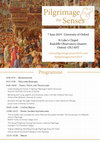
With the release of its inaugural issue in 2006, The Senses and Society journal proclaimed a "sen... more With the release of its inaugural issue in 2006, The Senses and Society journal proclaimed a "sensual revolution" in the humanities and social sciences. The ensuing decade has seen a boom in sensory studies, resulting in research networks, museum exhibitions, and a wealth of publications. This interdisciplinary conference hosted at the University of Oxford aims to shed light on how sensory perception shapes and is shaped by the experience of pilgrimage across cultures, faith traditions, and throughout history.
Pilgrimages present an intriguing paradox. Grounded in physical experiences—a journey (real or imagined), encounters with sites and/or relics, and commemorative tokens—they also simultaneously demand a devotional focus on the metaphysical. A ubiquitous and long-lasting devotional practice, pilgrimage is a useful lens through which to examine how humans encounter the sacred through the tools of perception available to us. Focusing on the ways in which pilgrimage engages the senses will contribute to our knowledge of how people have historically understood both religious experience and their bodies as vehicles of devotional participation.
Our speakers include early career scholars and established academics from a range of disciplines, including art history, history, literature, and religious studies. Professor Kathryn Rudy (University of St. Andrews) will deliver the keynote address.
For further information and the register, please visit www.pilgrimagesenses2019.com. Registration closes 24 May 2019.
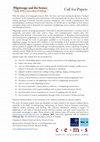
This interdisciplinary conference hosted at the University of Oxford aims to shed light on how se... more This interdisciplinary conference hosted at the University of Oxford aims to shed light on how sensory perception shapes and is shaped by the experience of pilgrimage across cultures, faith traditions, and throughout history. Pilgrimages present an intriguing paradox. Grounded in physical experiences—a journey (real or imagined), encounters with sites and/or relics, and commemorative tokens—they also simultaneously demand a devotional focus on the metaphysical. A ubiquitous and long-lasting devotional practice, pilgrimage is a useful lens through which to examine how humans encounter the sacred through the tools of perception available to us. Focusing on the ways in which pilgrimage engages the senses will contribute to our knowledge of how people have historically understood both religious experience and their bodies as vehicles of devotional participation. We call on speakers to grapple with the challenges of understanding the sensory experience of spiritual phenomena, while bearing in mind that understandings of the senses can vary according to specific cultural contexts. While the five senses are a natural starting point, we are open to including papers that deal with "sense" in a more general way, such as senses of time and place.
We invite 20-minute papers from any discipline on topics related to the themes outlined above, especially in the fields of anthropology, archaeology, art history, history, literature, musicology, religious studies, sociology, and theology. We welcome submissions relating to aspects of pilgrimage of any faith or historical period. Doctoral students and early career researchers are particularly encouraged to apply. Please submit a title, abstract (max. 250 words), and brief bio to pilgrimagesenses2019@gmail.com by January 20th. Successful applicants will be notified by February 5th. All submissions and papers must be in English.
Workshops and panels by Helena Guzik
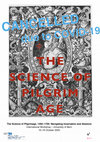
This workshop tackles the entanglement of science and pilgrimage in the early modern era. It is a... more This workshop tackles the entanglement of science and pilgrimage in the early modern era. It is assumed that pilgrimage was one out of several vectors in the field of early modern science, knowledge and scholarship. Rather than seeing the sacred journey as diametrically opposed to curiosity and early modern travel or viewing these as reconcilable only with difficulty, this workshop is dedicated to pilgrimage as a motor of late medieval and early modern scientific innovations. Despite rather isolated studies that show the persistence of long-distance pilgrimage beyond the reformations and its connections to such innovative fields as antiquarianism and cosmography, it continues to be taken for granted that pilgrims could only be curious and innovative insofar as they were sloppy pilgrims. Besides essentialising piety, such an outlook misses the fact that Christian pilgrimage-pilgrimage to Jerusalem in particular-had since Late Antiquity involved practices that resonated perfectly with early modern science. Those practices included but were not limited to cataloguing (places, stations, heretics, plants, relics), historicizing (places and objects), measuring, collecting (relics, eulogia, artefacts) and the production of credible proofs. Indeed, the importance of autopsy and examination goes back to New Testament rhetoric ("which we have seen with our eyes, which we have looked at and our hands have touched", 1 John 1:1) and was a time-honoured trope in pilgrimage accounts. Christ had sanctified the ground by his feet and blood, which meant that pilgrimages were by definition investigative. As both the terrain and the sacred text were authoritative, the translation of one into the other was a complex operation. Unsurprisingly, then, scientists (apothecaries, cosmographers, philologists, and others) were attracted to the Holy Land. There and in other faraway places the exposed practitioners of the science of pilgrimage were forced to collaborate with all kinds of religious adversaries.
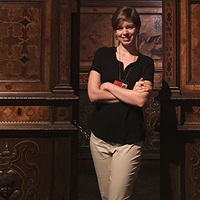
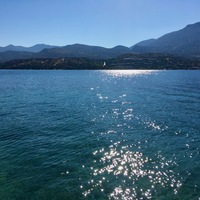




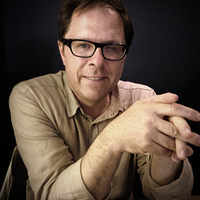


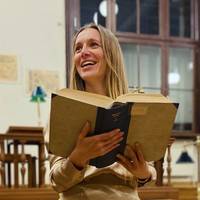

Uploads
Articles by Helena Guzik
Book Chapters by Helena Guzik
Papers by Helena Guzik
This lecture illuminates the visual and material culture of pilgrimage, exploring how images and objects both facilitated the pilgrimage experience itself and commemorated it after its completion. The talk focuses specifically on how pilgrims were represented in the art of medieval and early modern Europe. Referencing examples across a variety of artistic mediums, it presents the standard iconography associated with pilgrimage and explain the multivalent purposes that this under-examined imagery can serve within the broader context of artistic interpretation.
This paper traces Isabella's several pilgrimages, positing motivations for their undertaking. It considers these events in the context of her broader devotional habits and illustrates the various ways that religion influenced her collecting and her identity as a ruler. Finally, it offers a novel iconographic reading of the intarsia panels installed in her grotta. A solitary figure of a pilgrim—hitherto unexamined—is central in the idealized cityscape depicted in the wood panelling. His inclusion makes much more sense when assessed in light of Isabella's personal history of pilgrimage throughout her life. By detailing the historical context, we can begin to understand why Isabella would incorporate pilgrimage imagery in a meticulously cultivated iconographic programme designed to promote herself and underscore her virtue. Though Isabella was extraordinary in many ways, attention to her life through this lens gives us a glimpse of the importance of pilgrimage in the lives of elite Renaissance women and offers a more nuanced picture of early modern Italian courts.
Posters by Helena Guzik
Talks by Helena Guzik
Media by Helena Guzik
Conferences by Helena Guzik
Pilgrimages present an intriguing paradox. Grounded in physical experiences—a journey (real or imagined), encounters with sites and/or relics, and commemorative tokens—they also simultaneously demand a devotional focus on the metaphysical. A ubiquitous and long-lasting devotional practice, pilgrimage is a useful lens through which to examine how humans encounter the sacred through the tools of perception available to us. Focusing on the ways in which pilgrimage engages the senses will contribute to our knowledge of how people have historically understood both religious experience and their bodies as vehicles of devotional participation.
Our speakers include early career scholars and established academics from a range of disciplines, including art history, history, literature, and religious studies. Professor Kathryn Rudy (University of St. Andrews) will deliver the keynote address.
For further information and the register, please visit www.pilgrimagesenses2019.com. Registration closes 24 May 2019.
We invite 20-minute papers from any discipline on topics related to the themes outlined above, especially in the fields of anthropology, archaeology, art history, history, literature, musicology, religious studies, sociology, and theology. We welcome submissions relating to aspects of pilgrimage of any faith or historical period. Doctoral students and early career researchers are particularly encouraged to apply. Please submit a title, abstract (max. 250 words), and brief bio to pilgrimagesenses2019@gmail.com by January 20th. Successful applicants will be notified by February 5th. All submissions and papers must be in English.
Workshops and panels by Helena Guzik
This lecture illuminates the visual and material culture of pilgrimage, exploring how images and objects both facilitated the pilgrimage experience itself and commemorated it after its completion. The talk focuses specifically on how pilgrims were represented in the art of medieval and early modern Europe. Referencing examples across a variety of artistic mediums, it presents the standard iconography associated with pilgrimage and explain the multivalent purposes that this under-examined imagery can serve within the broader context of artistic interpretation.
This paper traces Isabella's several pilgrimages, positing motivations for their undertaking. It considers these events in the context of her broader devotional habits and illustrates the various ways that religion influenced her collecting and her identity as a ruler. Finally, it offers a novel iconographic reading of the intarsia panels installed in her grotta. A solitary figure of a pilgrim—hitherto unexamined—is central in the idealized cityscape depicted in the wood panelling. His inclusion makes much more sense when assessed in light of Isabella's personal history of pilgrimage throughout her life. By detailing the historical context, we can begin to understand why Isabella would incorporate pilgrimage imagery in a meticulously cultivated iconographic programme designed to promote herself and underscore her virtue. Though Isabella was extraordinary in many ways, attention to her life through this lens gives us a glimpse of the importance of pilgrimage in the lives of elite Renaissance women and offers a more nuanced picture of early modern Italian courts.
Pilgrimages present an intriguing paradox. Grounded in physical experiences—a journey (real or imagined), encounters with sites and/or relics, and commemorative tokens—they also simultaneously demand a devotional focus on the metaphysical. A ubiquitous and long-lasting devotional practice, pilgrimage is a useful lens through which to examine how humans encounter the sacred through the tools of perception available to us. Focusing on the ways in which pilgrimage engages the senses will contribute to our knowledge of how people have historically understood both religious experience and their bodies as vehicles of devotional participation.
Our speakers include early career scholars and established academics from a range of disciplines, including art history, history, literature, and religious studies. Professor Kathryn Rudy (University of St. Andrews) will deliver the keynote address.
For further information and the register, please visit www.pilgrimagesenses2019.com. Registration closes 24 May 2019.
We invite 20-minute papers from any discipline on topics related to the themes outlined above, especially in the fields of anthropology, archaeology, art history, history, literature, musicology, religious studies, sociology, and theology. We welcome submissions relating to aspects of pilgrimage of any faith or historical period. Doctoral students and early career researchers are particularly encouraged to apply. Please submit a title, abstract (max. 250 words), and brief bio to pilgrimagesenses2019@gmail.com by January 20th. Successful applicants will be notified by February 5th. All submissions and papers must be in English.